Early in the growing season, abiotic (freezing temperatures, hail, flooding, etc.) and biotic (slugs, deer, disease, insects, etc.) factors often reduce soybean plant stands. A soybean field with poor seedling vigor, slow plant growth, and low plant stand often triggers an “I need to fix this” impulse. However, these fields don’t always need to be replanted. This extension publication, provided by the Soybean for Success team, addresses some commonly asked questions to be considered prior to replanting a soybean field. This project was funded by the Soybean Checkoff.
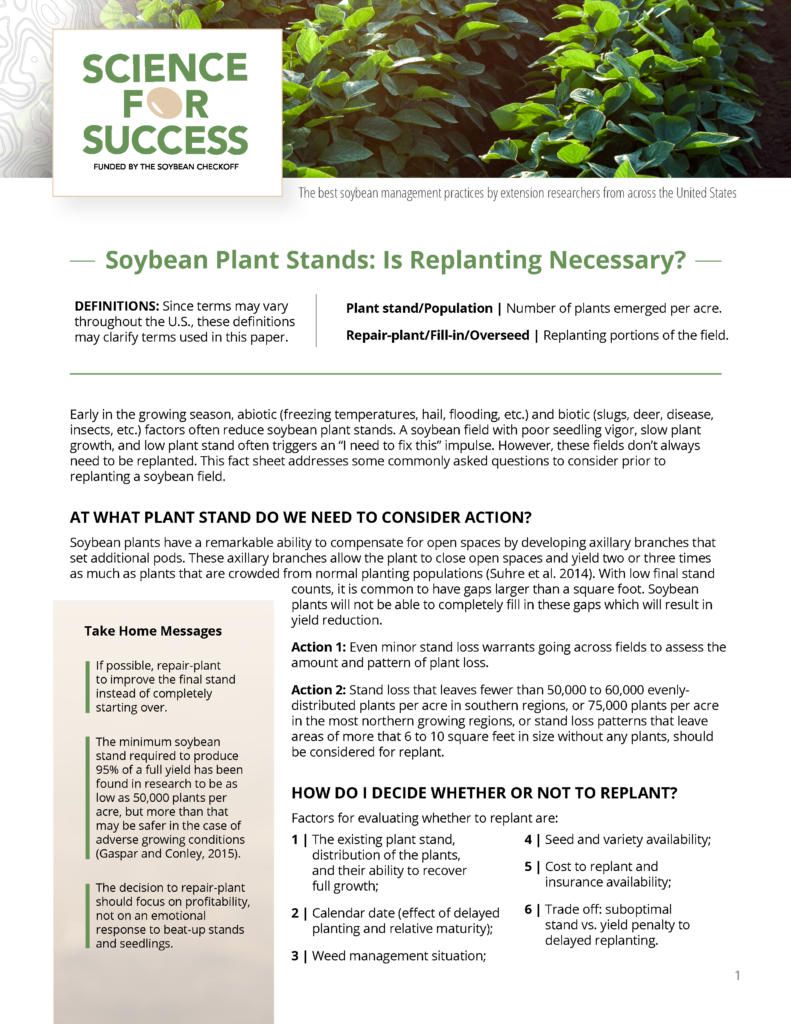
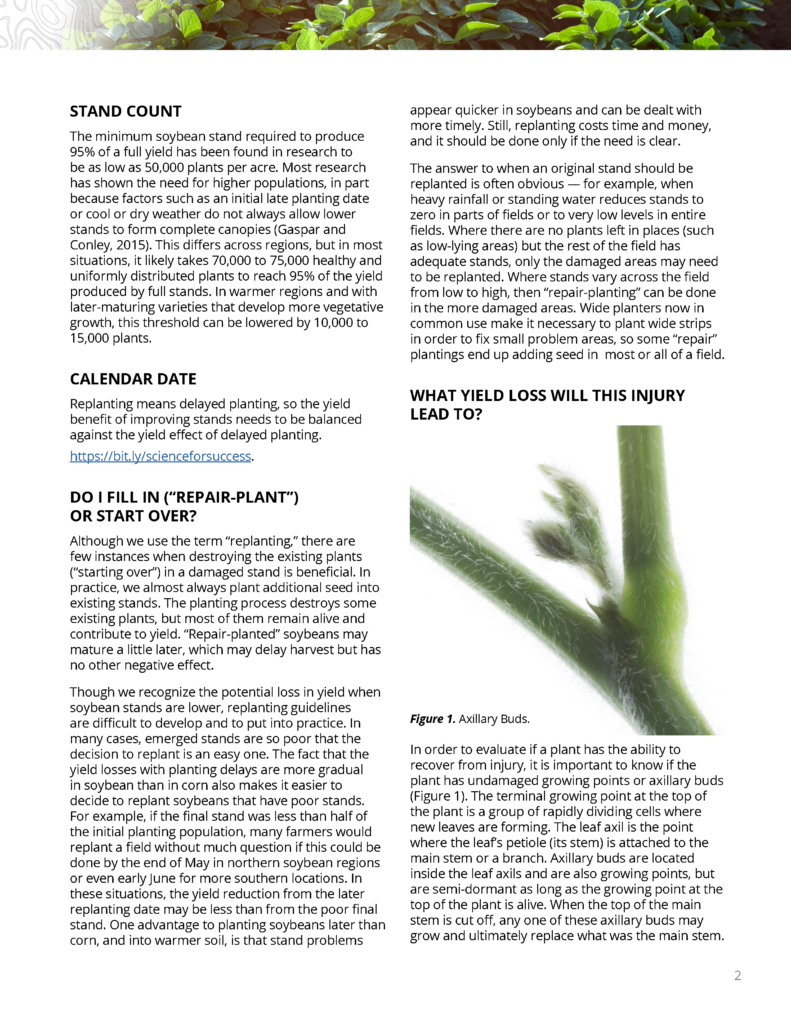
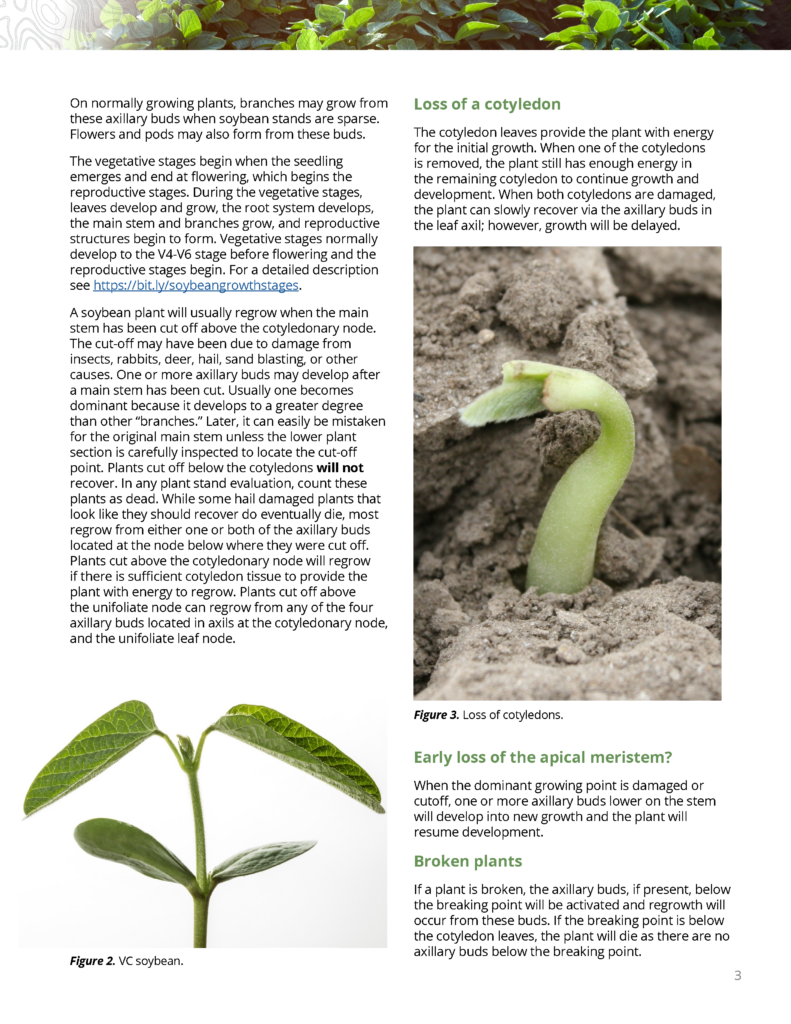
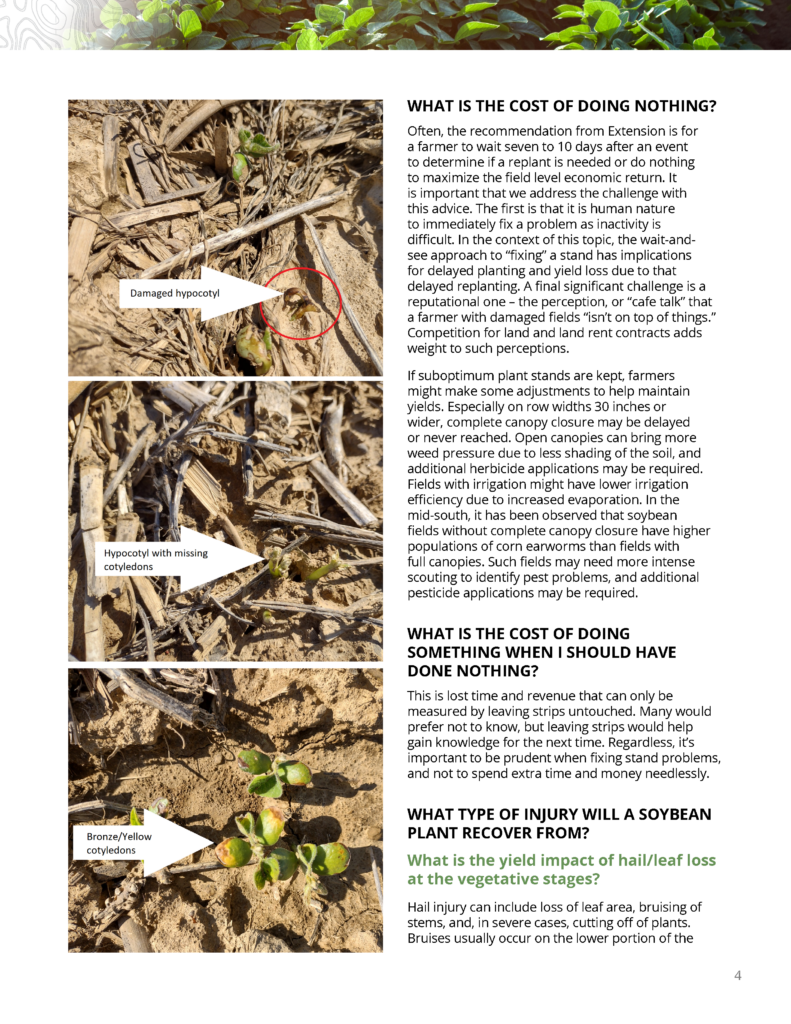
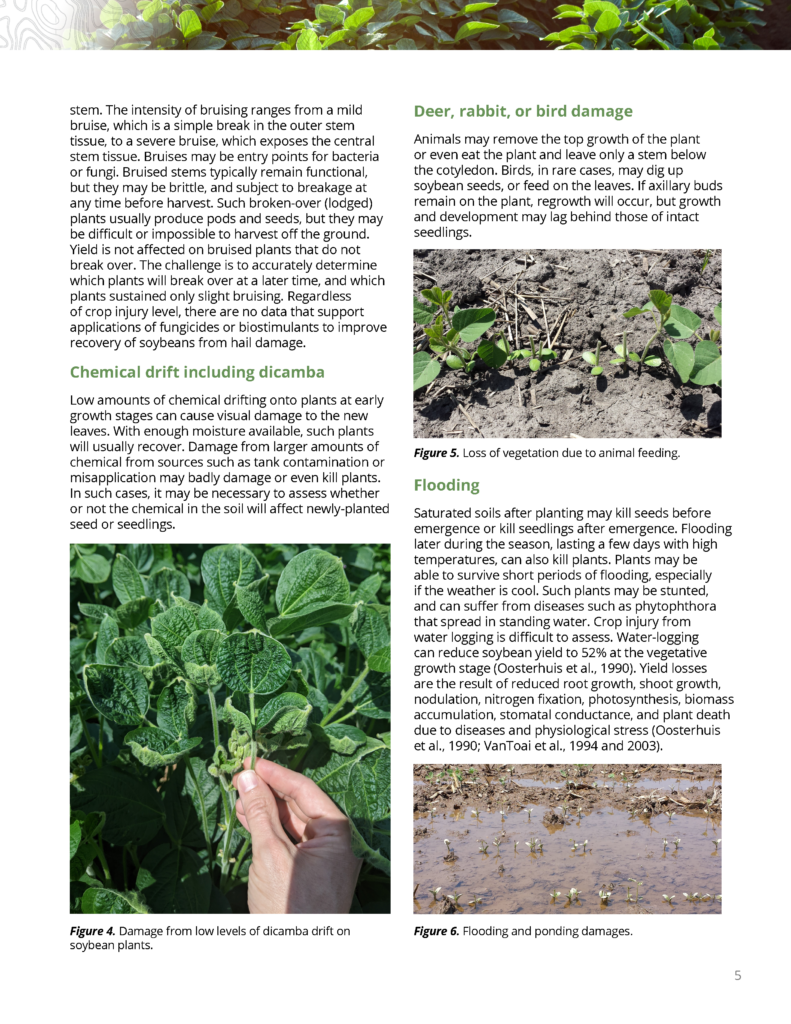
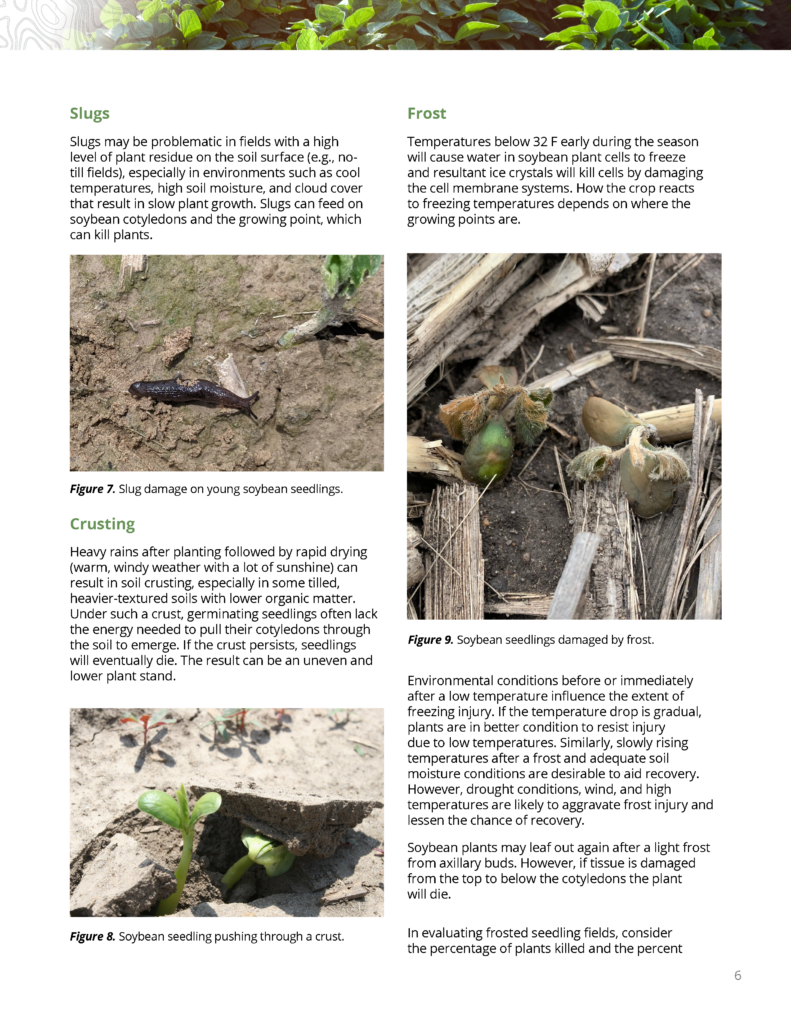
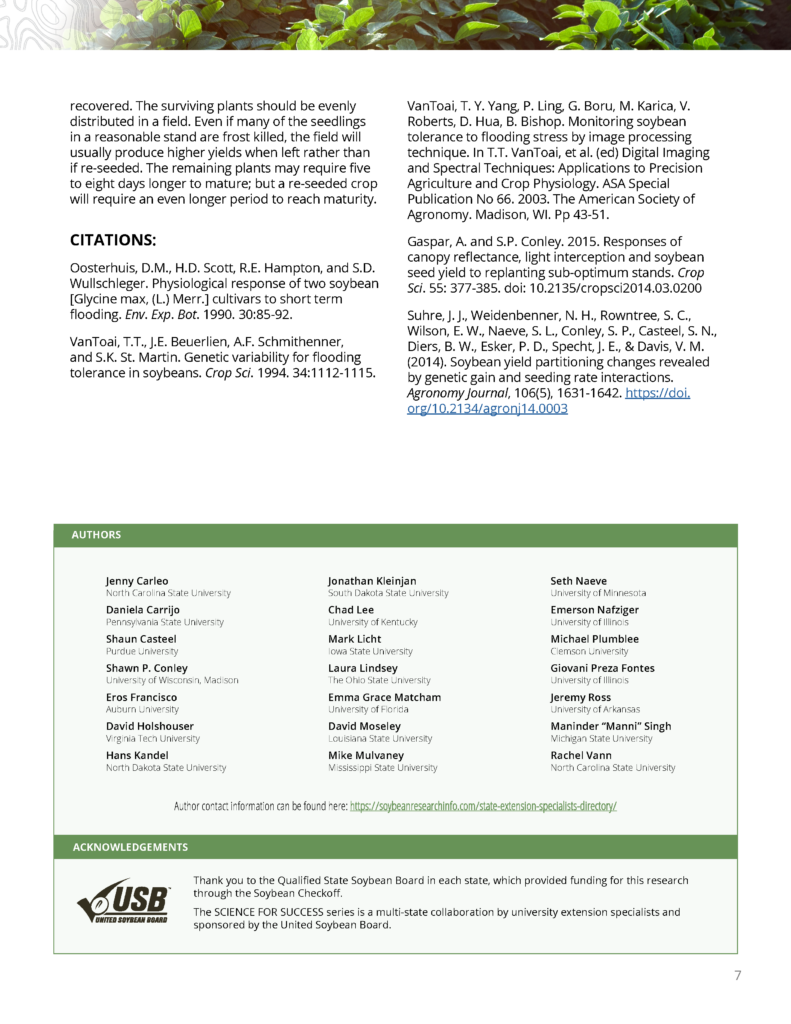




 and then
and then